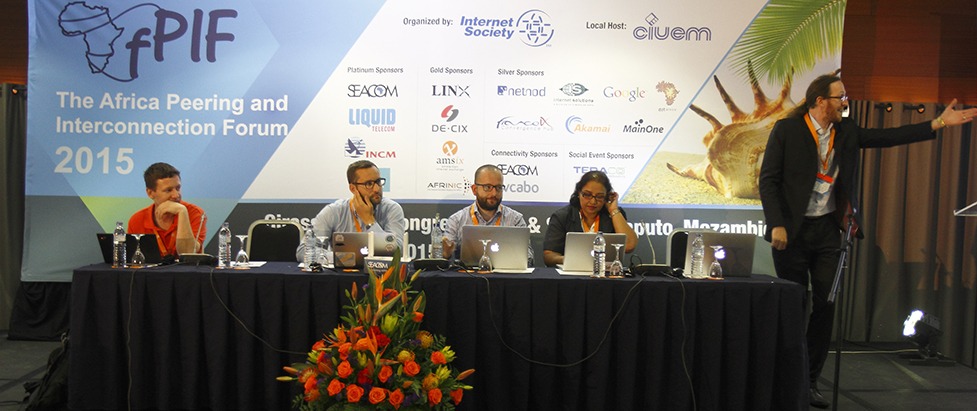Missed the first day of AfPIF? Here’s the recap!
The first day of AfPIF is usually known as “Peering Coordinators’ Day”, and focused on addressing emerging technical issues on interconnection in line with this year’s theme “Lessons Learnt”.
Overview
For AfPIF-15 Day 1, topics for discussion related to data centre operations and features such as cross-connects. There was a session that shared peering and transit experiences and tutorials. why should we be measuring interconnection was the title of the last panel discussion that showcased the state and evolution of interconnection in Africa . The last session of the day is one of the best – “Peering Introductions” – where participants introduce their networks and state their peering policies and express their interest to meet potential peers at AfPIF.
Data centres
Interxion shared their experience running carrier neutral data centres in Europe and offered lessons for African companies who want to run resilient and agile facilities capable of attracting big businesses. In terms of facilities, a data centre can be in a remote or metropolitan area, but must have high connectivity, grid power, and clear standard operating procedures, scalability, a trained workforce, and a well-outlined business case.
NAPAfrica is probably Africa’s largest carrier neutral data centre, launched in 2009, after the deregulation of the South African telecommunication market in 2008. The launch of several telecom companies, deregulation, entry of submarine cables, and general business growth has driven demand for NAPAfrica services.
Challenges
For NAPAfrica, and Common to many African countries, power outages have been one of their biggest challenges but at the same time their best indirect advertisement opportunity. Availability of power can be used to determine the data centre location, given cooling needs and a growing demand for increased power, to cope with a growing business.
Highlights
Seacom’s announcement that it will be shift to an “open” peering policy was big news for this community. This means any network in Africa that is not a customer of Seacom can peer with them at any of their current eight (8) and future peering locations.. Seacom’s decision to peer openly is inspired by the need to grow the level of content exchanged within the continent. This experience prompted MainOne, a submarine cable operator in West Africa speaking during the peering introductions, to mention that they would review their selective peering policy in the days ahead.
AfriNIC’s new policy which reserves IPv4 addresses for IXPs while maintaining the 100% discount policy is a seen as a big boost for IXP development in Africa. Thus far over 30 IXPs have benefited from this initiative.
A number of presentations during the course of the day highlighted on routing security an indicator that more on this area needs to be done. The MANRS initiative presented by the Internet Society proposed a collaborative approach towards addressing some of the issues.
On the measurements panel the data sets on the launch of the Liberia IXP in early August provided empirical data on the benefits visible benefits of an IXP. The measurements made use of Atlas Probes in Liberia. This may have triggered renewed interest in the deployment of the probes, as over 17 measurement probes were distributed to 10 countries across Africa thereafter.
There were 13 ASN’s that stood to introduce themselves at the end of day one with more expected tomorrow. The meeting convenes tomorrow with the official opening by the Mozambique Ministry of Transport and Communication. You are welcome to follow the sessions remotely from
Most Popular Tweet of the Day
Don’t forget – our hashtag is #AfPIF205. Tweet it and maybe you’ll win most popular tweet of the day!
My view of #AFPIF2015 conference from the podium. An excellent turnout for the @internetsociety #peering conference! pic.twitter.com/dqthxGZBd5
— Martin Levy (@mahtin) August 25, 2015
Want to WATCH What Happened?
Watch yestersday sessions

